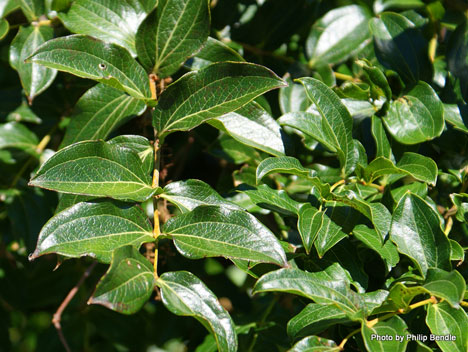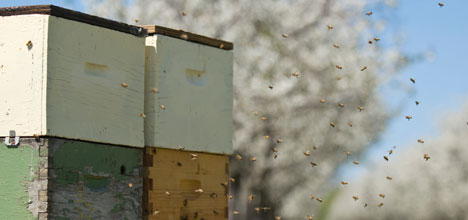Beekeepers are being advised to test their honey for tutin toxins as drought conditions are raising the risk of toxic honey this year.
The National Beekeepers Association says larger or commercial beekeepers do this testing as standard practice, but smaller beekeepers may not always realise the need to do so.
Beekeepers are being advised to test their hives for the tutin toxin.
As drought conditions cut down the options for food for foraging bees, there is an increased chance the bees will feed from the tutu plant, which produces dangerous tutin toxins in honey.
The NBA advises beekeepers to homogenise their honey and then test it for tutin levels. This advice is particularly important for smaller or ‘hobbyist' beekeepers who sell or give away their honey to friend and relatives.
The association suggests beekeepers with small hive holdings with beehives within approximately two kilometres of tutu bushes in the North Island or upper parts of the South Island, get their honey tested, by sending it to accredited laboratories.
As tutin is not evenly distributed in honey comb, this product from particularly risky areas should be avoided.
‘At risk' areas can be found throughout the North Island and the top of the South Island.
When conditions are dry plants produce less nectar so bees seek out other food sources, one of which is the sweet honeydew is excreted by small insects such as passion vine hoppers (Scolypopa australis) which feed on the sap of tutu plants (Coriaria arborea). Bees used the honeydew to make honey and consequently, any tutin present in honeydew will also enter the honey. Tutin is only toxic to mammals, but is not toxic to insects.
Honey processors usually mix honey from different regions so due to the dilution effect the probability that excessive quantities of toxic compounds like tutin are present is very small in processed honey.
However, comb honey is by definition pure and thus can contain excessive amounts of plant toxins.
Honey from regions where tutu plants grow can contain tutin in periods when the tutu plants are
infested by large numbers of vine hoppers and weather conditions are hot and dry.
To prevent honey from contamination with tutin the bee hives should be placed at 5 km distance from tutu plants.
The Ministry for Primary Industries sets the maximum level of tutin allowed in honey at 2 milligrams per kilogram and the maximum level of tutin in comb honey is 0.1 milligrams per kilogram.
It is a legal requirement that all honey for sale or export must comply with the set limits. Beekeepers and packers of honey must ensure that they take appropriate measures to meet these limits.
MPI also recommends beekeepers who only produce honey for their own use, follow the standard. If they donate or barter their honey, then that is a form of trade and they must comply with the standard for tutin in honey.
 The Tutin plant.
The Tutin plant.
Toxic honey can have a severe effect on the human nervous system and symptoms include vomiting, delirium, and seizures.
The NBA says the risk is higher this year because of the drought conditions in many areas.



0 comments
Leave a Comment
You must be logged in to make a comment.